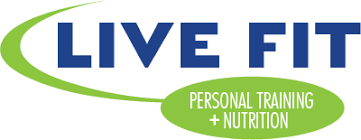HIIT: High Intensity Interval Training
High Intensity Interval Training Overview
High intensity interval training sessions are commonly called HIIT workouts. This type of training involves repeated bouts of high intensity effort followed by varied lower intensity recovery times. This style of training has become quite popular in recent times, and for good reason.
Current Exercise Recommendations
Typically, it is recommended that adults engage in both aerobic exercise and strength training. This combination ensures that we are working our heart and lungs, as well as our muscular fitness. It is recommended that adults get at least 30 minutes of moderate intensity physical activity 5 times per week. Moderate physical activity means that you should be able to speak in full sentences during your workout; although you might even break a sweat. In lieu of moderate exercise adults can participate in vigorous exercise for 20 minutes 3 days per week. Vigorous exercise means that you should not be able to speak in complete sentences while performing exercise. A combination of moderate and vigorous activity can be used to meet this recommendation.
Strength training should also be performed twice per week. The recommendation is 8-12 repetitions of 8-10 exercises that target all major muscle groups. This can be accomplished by doing body weight exercises, resistance bands, free weights, workout machines, and other various fitness equipment.
What is HIIT?
High intensity interval training can meet both our aerobic and strength exercise recommendations at the same time. High intensity interval training combines work periods ranging from a couple of seconds to a few minutes, and is performed at 80-95% of a persons estimated heart rate. Your maximum heart rate can be calculated using a formula, but the take away here is that it is the maximum number of times that your heart can beat in a minute without overexerting yourself. This all out bout of high intensity effort is complimented with a recovery period, about 40-50% of your max heart rate. Typically, the recovery period lasts about as long as the intense period, these work periods are cycled back and forth for the entirety of the workout which can last anywhere from a few minutes to an hour depending on the work performed and how trained the person is.
Benefits of HIIT
Improve aerobic and anaerobic fitness
blood pressure stabilized
Improvements in cardiovascular health
Improvements in insulin sensitivity
Improved cholesterol profiles
Decreased abdominal fat
Greater calories expenditure
Increased or maintained muscle mass
Who Can Do HIIT?
HIIT training is for anyone, just know your limitations. Everyone’s maximal effort is different, so exercise intensity is going to be subjective. With that being said HIIT workouts can be modified for people of various fitness levels, or even if you have special condition. HIIT training can be implemented into any cardio routine, whether it is biking, running, swimming, even walking. HIIT will provide you with the same benefit as a conventional cardio workout in less time. When we condense our workouts into shorter durations we typically burn more calories than we normally would.
Safety First
It is important to be realistic with yourself, start small and work your way to your goal. It is important to have an idea of your level of fitness before you start a regimen like this. Especially if you have been a living a sedentary lifestyle for some time it is important to establish a solid fitness foundation. Start doing conventional aerobic workouts a couple time times per week, a good goal would be to aim for the activity requirements mentioned previously. This will help get your body prepared for the intensity of an HIIT workout. From here start incorporating small HIIT style workouts into your fitness routine, even if it’s one per week that a start. Work on extending the time of each session and then eventually add another session each weak. HIIT workouts are physically demanding and it is important that our bodies get adequate time to recover. Remember it is always wise to check with your doctor before starting a new fitness regimen.
